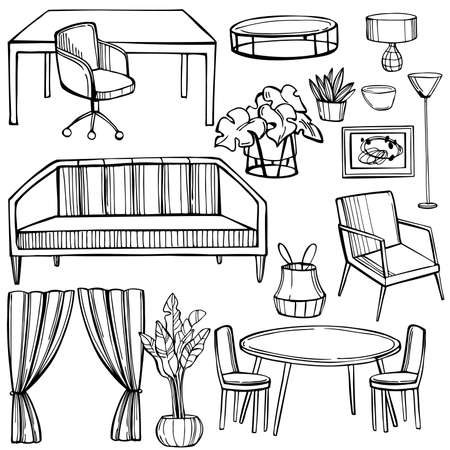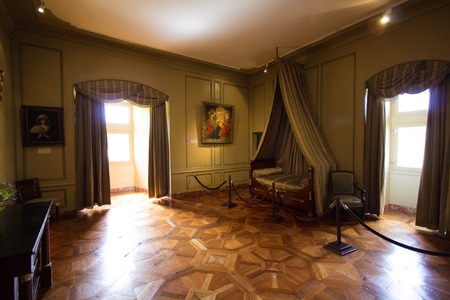Historical Context and Origins
Understanding the distinctive features of Victorian and Georgian interiors begins with a close examination of their historical contexts. Both styles emerged from pivotal periods in British history, each shaped by unique societal influences, technological advancements, and prevailing philosophies. The Georgian era spans from 1714 to 1837, a period marked by the reigns of the first four Hanoverian kings named George. This era witnessed the Enlightenment, fostering rationality, symmetry, and classical inspiration in architecture and interiors. In contrast, the Victorian era (1837–1901) coincides with Queen Victoria’s rule, an age defined by industrial progress, the expansion of the British Empire, and profound social change. These factors directly influenced interior aesthetics, resulting in distinct characteristics for each style.
| Aspect | Georgian Era | Victorian Era |
|---|---|---|
| Time Period | 1714–1837 | 1837–1901 |
| Key Influences | The Enlightenment, Classical Antiquity | Industrial Revolution, Empire Expansion |
| Main Characteristics | Symmetry, restraint, classical proportions | Eclecticism, ornate detailing, bold use of colour and pattern |
| Societal Context | Rising middle class, focus on rational design | Urbanisation, increased wealth disparity, mass production |
The evolution from Georgian to Victorian interiors reflects broader shifts within British society—from the measured elegance of Georgian times to the exuberance and complexity of the Victorian age. By appreciating these origins and influences, one can begin to decode the subtle yet significant differences between these two iconic British interior styles.
2. Architectural Features
When distinguishing between Victorian and Georgian interiors, the architectural features offer some of the most telling clues. British homes from these eras each showcase a unique approach to design, evident in elements such as mouldings, fireplaces, windows, and ceilings. Below, we analyse these features to help you confidently identify the period of any property.
Mouldings and Cornices
| Feature | Georgian | Victorian |
|---|---|---|
| Mouldings & Cornices | Delicate, symmetrical plasterwork with classical motifs; often restrained and proportional | Bold, elaborate patterns with floral or Gothic influences; sometimes layered or highly decorative |
Fireplaces
| Feature | Georgian | Victorian |
|---|---|---|
| Fireplaces | Slim, elegant surrounds typically made from marble or stone; simple pilasters and understated mantels | Larger, ornate hearths; cast iron inserts with intricate tiles; grander mantels often in dark woods or elaborate marble designs |
Windows and Ceilings
| Feature | Georgian | Victorian |
|---|---|---|
| Windows | Sash windows with six or more panes per sash; balanced proportions; large central bays not uncommon in grander homes | Bays become more prominent; single large panes as glassmaking improves; stained glass panels and arched window heads often featured |
| Ceilings | Tall ceilings with simple coving; sometimes adorned with modest ceiling roses in reception rooms | Decorative plasterwork becomes prevalent; deep cornicing, elaborate ceiling roses and even painted or papered ceilings are hallmarks of this era’s grandeur |
Key Takeaways for Identifying Interiors:
- Symmetry and restraint signal Georgian design; look for subtle elegance in mouldings and fireplaces.
- The Victorian era celebrates ornamentation; expect boldness in fireplace surrounds, window treatments, and ceiling details.
If you’re assessing a property for its period authenticity or considering a renovation, understanding these architectural hallmarks can provide invaluable guidance—especially within the context of UK heritage regulations and planning considerations.

3. Decorative Styles and Colour Palettes
When distinguishing between Victorian and Georgian interiors, one of the most telling aspects lies in their decorative styles and colour palettes. Each era embraced distinctive motifs, wall coverings, and finishes that reflected the socio-economic and cultural ethos of their time. Understanding these differences is crucial for property owners, designers, and heritage enthusiasts aiming to preserve or recreate period-appropriate spaces.
Motifs and Decorative Elements
Georgian interiors (circa 1714–1830) are renowned for their restrained elegance. Motifs were often inspired by classical antiquity—think acanthus leaves, urns, swags, and delicate floral patterns. These embellishments were applied sparingly, favouring symmetry and balance over ostentation. In contrast, Victorian interiors (circa 1837–1901) celebrated abundance and variety. Motifs became more eclectic, featuring gothic arches, botanical prints, birds, and even exotic influences from the British Empire’s colonies. Ornamental plasterwork, heavy cornicing, and elaborate ceiling roses became commonplace in Victorian homes.
Wall Coverings
| Era | Typical Wall Coverings | Finishes & Techniques |
|---|---|---|
| Georgian | Lime plaster walls painted in soft hues; simple wooden panelling; minimal wallpaper use in early years; later, damask and block-printed wallpapers with subtle patterns. | Matte or eggshell finishes; emphasis on smooth surfaces; dado rails separating wall sections. |
| Victorian | Richly patterned wallpapers often with flocking or embossed details; dark wood panelling below dado rails; stencilling and decorative borders above picture rails. | Glossy paint finishes; textured surfaces; bold layering of materials such as lincrusta or anaglypta wallcoverings. |
Colour Palettes
The Georgian palette is defined by its lightness and sense of airiness. Favoured shades included stone, sage green, Wedgwood blue, primrose yellow, and muted pinks—colours achieved with natural pigments available at the time. In contrast, the Victorian era saw a shift towards deeper, more saturated tones due to advances in chemical dyes: burgundy, forest green, navy blue, mustard yellow, and terracotta became highly fashionable. The use of contrasting trims—such as white or gilded mouldings against darker walls—further underscored the Victorian penchant for drama.
Quick Reference: Decorative Differences at a Glance
| Georgian Interiors | Victorian Interiors | |
|---|---|---|
| Motifs & Ornamentation | Slimline classical motifs; restrained detailing; symmetry prevails. | Eclectic mix; heavily ornamented; asymmetry tolerated. |
| Wall Coverings | Plain or subtly patterned wallpapers; painted panelling. | Bolder wallpapers with rich textures and colours. |
| Main Colours | Pale blues, greens, creams, soft pinks. | Burgundies, olives, deep blues, rich golds. |
| Finish & Texture | Smooth matte surfaces; understated elegance. | Glossy finishes; tactile layers; visual richness. |
Cultural Context Matters
The choice of decorative style and colour was not merely aesthetic but also a reflection of contemporary attitudes towards wealth, progress, and technology. While Georgian restraint spoke to Enlightenment ideals of order and rationality, Victorian exuberance mirrored the optimism—and sometimes anxieties—of a rapidly changing society. Recognising these nuances enables homeowners to make informed decisions when restoring period properties or planning sympathetic renovations that respect Britain’s architectural heritage.
4. Furniture and Furnishings
When distinguishing between Victorian and Georgian interiors, understanding their respective approaches to furniture and soft furnishings is vital. Each period features hallmark silhouettes, textiles, and decorative accessories that reflect the aesthetic sensibilities and social aspirations of their time.
Signature Furniture Silhouettes
| Georgian | Victorian | |
|---|---|---|
| Common Woods | Mahogany, walnut, oak | Rosewood, mahogany, walnut, ebonised woods |
| Chair Styles | Elegant cabriole legs, shield- or camelback chairs, often with minimal upholstery | Balloon-back chairs, heavily padded seats, deep buttoning (Chesterfield sofas) |
| Tables & Cabinets | Slim pedestal tables, bureau bookcases with restrained ornamentation | Large sideboards, display cabinets with ornate carving and glass doors |
Textiles and Upholstery
The Georgian era favoured light damasks, chintz, and plain weaves in muted colours such as sage green or duck egg blue. Fabrics were used sparingly as drapery or simple upholstery. In contrast, the Victorians indulged in plush velvets, heavy brocades, tassels, and fringes. Deep jewel tones like burgundy and emerald predominated alongside elaborate floral or paisley patterns.
Decorative Accessories
- Georgian: Gilt-framed mirrors, Wedgwood ceramics, classical urns, and brass candlesticks; decoration was tasteful but never ostentatious.
- Victorian: Abundant use of ornamental trinkets—think porcelain figurines, oil lamps with etched glass shades, photo frames on every surface, and embroidered cushions or antimacassars.
Cultural Context
The Georgian home reflected Enlightenment values: symmetry and proportion over excess. The Victorian house embodied prosperity and a desire for comfort—expressed through layered textures and rich details. When assessing a room’s furnishings in Britain’s historic homes today, these distinctions are key in decoding its era at a glance.
5. Lighting and Technology
The evolution of lighting and household technologies played a pivotal role in shaping the distinct interior aesthetics of both Georgian and Victorian homes across Britain. Understanding these advancements helps to decode not only stylistic choices but also the practical considerations behind each periods interiors.
Georgian Era: Emphasis on Natural Light
During the Georgian period (1714–1837), homes were designed to maximise daylight. Large sash windows, often with multiple panes, allowed abundant natural light to flood into rooms. Artificial lighting was limited primarily to candles and oil lamps, meaning interiors were planned around daylight hours. Chandeliers and wall sconces were minimalistic, reflecting both technological constraints and prevailing neoclassical tastes for symmetry and restraint.
Victorian Era: Embracing Technological Innovation
The Victorian era (1837–1901) coincided with the Industrial Revolution, which brought significant advancements in gas lighting and later, electricity. This technological leap transformed how spaces were illuminated and decorated. Rooms could now be brighter after dark, influencing trends towards richer colours, heavier drapery, and more elaborate decorative schemes—details that would have been lost in dim candlelight but flourished under stronger artificial light sources.
Comparative Overview: Lighting & Technology Advancements
| Feature | Georgian Interiors | Victorian Interiors |
|---|---|---|
| Main Lighting Sources | Candles, Oil Lamps | Gas Lighting, Early Electricity |
| Window Design | Large Sash Windows, Clear Panes | Bay Windows, Stained or Frosted Glass |
| Decorative Fixtures | Simple Chandeliers, Sconces | Ornate Chandeliers, Decorative Gasoliers |
| Technological Impact on Decor | Light Colours to Reflect Daylight | Darker Palettes Enabled by Brighter Artificial Light |
Cultural Significance in British Homes
The progression from Georgian simplicity to Victorian opulence is closely linked to technological advancements in lighting. Where Georgians valued proportion and clarity enabled by natural light, Victorians embraced innovation—filling their rooms with intricate details that showcased their embrace of progress. Recognising these features provides a crucial lens for distinguishing between the two styles in British heritage properties.
6. How to Tell Them Apart: Practical Tips
Identifying whether an interior is Victorian or Georgian can be challenging, especially as many homes in the UK have evolved over time and may feature a blend of both styles. However, with careful observation and attention to key visual cues, you can distinguish between these two iconic periods. Below is a practical guide to help you recognise the defining elements of each era.
Key Features at a Glance
| Feature | Victorian Interior | Georgian Interior |
|---|---|---|
| Mouldings & Cornices | Ornate, deep, and highly decorative | Simpler, elegant, often flatter in profile |
| Colour Palette | Darker hues such as burgundy, forest green, navy | Pale shades—cream, powder blue, soft grey |
| Fireplaces | Cast iron with detailed tiles and surrounds | Simple marble or stone surrounds; symmetrical design |
| Windows | Sash windows with larger panes; bay windows common | Sash windows with smaller panes (six-over-six); flat fronts |
Look for Decorative Detailing
Victorian interiors tend to display exuberant embellishments—think intricate ceiling roses, heavy drapery, and patterned wallpaper. In contrast, Georgian style champions symmetry and restraint: look for understated cornicing, classical motifs (such as egg-and-dart), and an overall sense of balance.
Examining Architectural Proportions
The proportions of rooms can offer valuable clues. Georgian interiors often feature high ceilings and generously sized sash windows set within thick walls. Rooms are typically rectangular and arranged with symmetry in mind. Victorian homes, while still boasting high ceilings, might introduce alcoves or bay windows that break up the regularity.
Materials & Finishes
Georgian finishes favour natural materials—polished wood floors and marble hearths are hallmarks. By the Victorian period, technological advances allowed for mass-produced details: tiled hallways, decorative skirting boards, and elaborate ironwork became standard features.
Practical Checklist for Identification
- Check the window style and pane arrangement.
- Observe the complexity of mouldings and ceiling details.
- Note the colour scheme—does it feel dark and dramatic or light and airy?
- Inspect fireplaces for design motifs and materials used.
- Evaluate room layout for symmetry (Georgian) versus more individualistic arrangements (Victorian).
If you remain unsure after applying these tips, consult a local architectural historian or heritage surveyor who can provide expert guidance tailored to your property’s unique characteristics.
7. Blending and Preserving Period Features Today
In the current landscape of British home design, there is growing appreciation for both Victorian and Georgian architectural heritage. Homeowners and developers alike are seeking to sensitively restore, blend, or preserve these period features while ensuring properties remain functional for modern living. Below, we explore key contemporary approaches and considerations when working with such distinctive interiors.
Restoration: Respecting Original Craftsmanship
The restoration of Victorian and Georgian homes often involves meticulous attention to original details. For example, restoring plaster cornices, ceiling roses, sash windows, and fireplaces is increasingly popular. Where possible, skilled craftsmen use traditional methods and materials to maintain authenticity. However, compliance with UK building regulations and listed building consent is crucial for any significant alterations.
Blending Styles: Marrying Old and New
Modern British homeowners frequently desire the charm of period features alongside the comforts of contemporary design. This has given rise to a trend where original elements are thoughtfully blended with modern interventions—such as open-plan layouts or sleek kitchens—without compromising historic integrity. The table below highlights some common strategies:
| Feature | Victorian Approach | Georgian Approach | Modern Integration |
|---|---|---|---|
| Windows | Sash windows with stained glass | Larger sash windows with minimal glazing bars | Double-glazed replicas maintaining original profiles |
| Fireplaces | Tiled cast-iron surrounds | Simple marble or stone mantels | Retaining surrounds with bioethanol inserts for efficiency |
| Mouldings | Ornate cornices and ceiling roses | Elegant but restrained mouldings | Restored or replicated using modern materials where needed |
Preservation: Legal Protections and Best Practice
A significant proportion of period homes in the UK are listed buildings, subject to strict legal protections under English Heritage guidelines. Owners must seek Listed Building Consent before making alterations that affect historical character. In practice, this means sympathetic repairs and retaining as many original features as possible—even when updating services like electrics or plumbing.
Sustainability Considerations
Contemporary preservation also prioritises sustainability: retrofitting insulation, draught-proofing sash windows, and installing efficient heating systems can be done without detracting from historic value. There is a strong emphasis on reversible upgrades so future custodians can adapt homes as needed.
Professional Guidance: The Role of Specialists
Engaging conservation architects, heritage consultants, and specialist contractors is strongly recommended to navigate regulatory requirements and ensure best practice. These professionals are well-versed in both the spirit and letter of UK planning law, helping owners achieve a balance between preservation and contemporary comfort.


